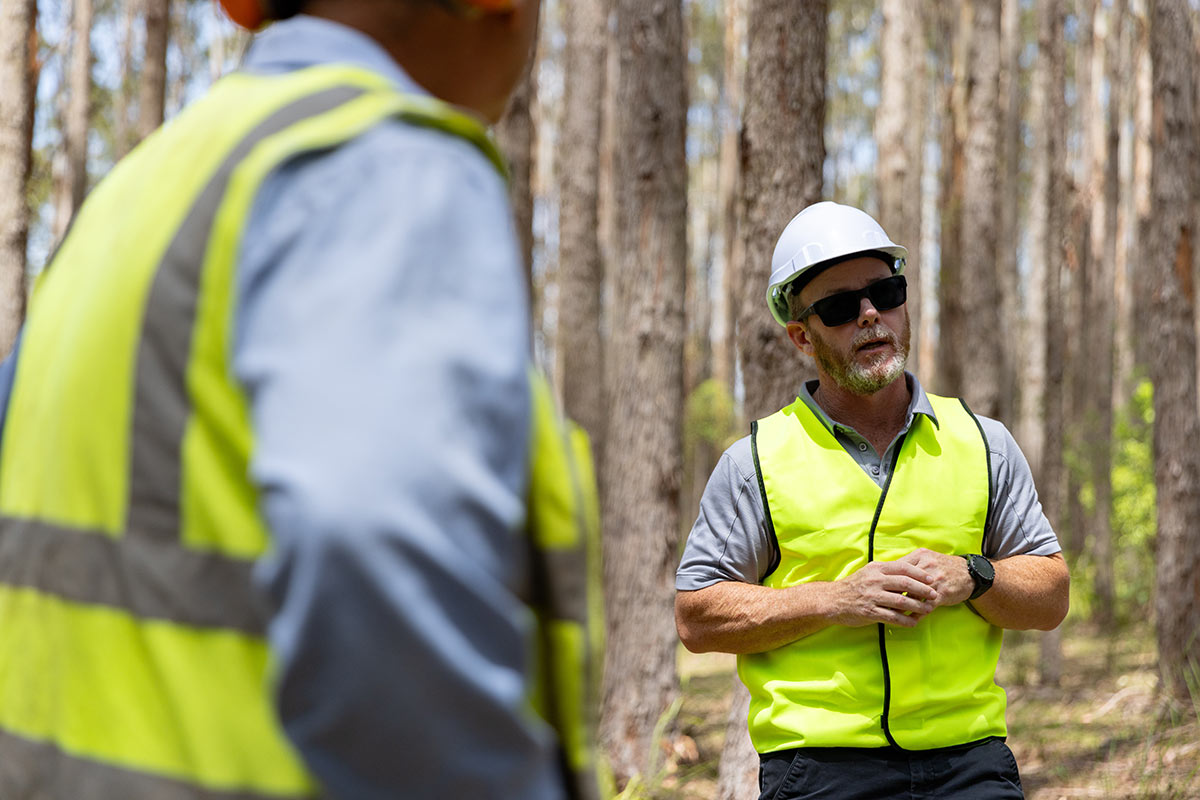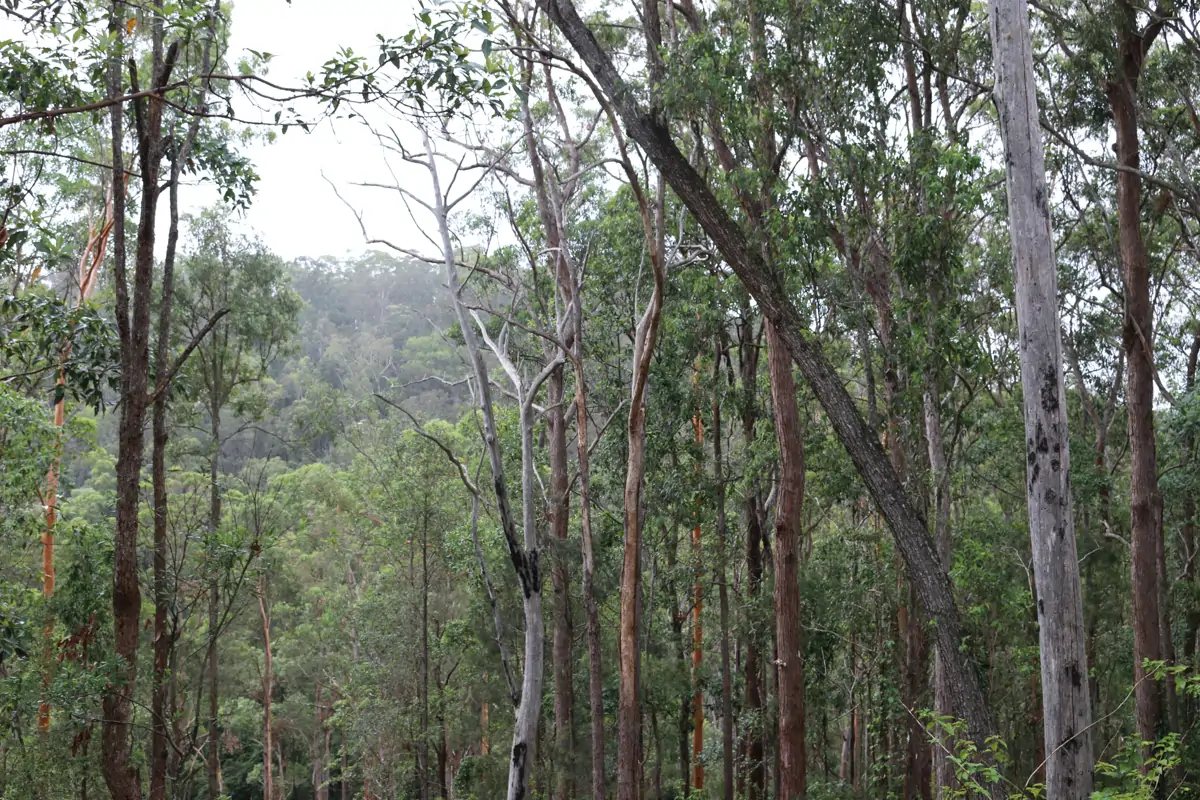Managing your private native forest need not be a difficult task. There are clear codes and guidelines that determine sustainable ways of managing private native forest in NSW and across Australia. As the leader in sustainable forest management we have created this short guide covering the four main approaches to managing private native forest on the North Coast of NSW.
We offer free assessments of your forest and provide an end-to-end sustainable forest management service ensuring all forest management operations are fully compliant with the relevant codes of practice. We also provide you with the best solution for your requirements, considering the long term health of your forest, property and livelihood.
The four main approaches to forest management on your property.
- Single tree selection, thinning and Australian group selection
The Private Native Forestry (PNF) Code of Practice for Northern NSW has established clear principles and practices for the management of Forests. This Code pays particular attention to the protection of wildlife habitat, including koala feed trees, as part of the promotion of ecologically sustainable forest management and the creation of thriving NSW private native forests.
Single tree selection & thinning
The PNF code of practice permits the harvest of single trees of various ages or the thinning of single aged stands following the approval of a Forest Management Plan. This method of silviculture promotes regeneration and growth of shade-tolerant species, preferred species or individual trees. Single tree selection and thinning operations must not reduce the standard basal area below 14m2/hectare.
Australian group selection
Australian group selection on the other hand, is a silvicultural system that promotes the regeneration of shade-intolerant species via the harvesting of small groups of trees, mimicking natural tree falls in nature, allowing for subsequent regeneration and creation of a forest with patches of differently aged trees. One of the key rules of the plan is that the sum of the canopy openings must at no time exceed 20% of the net harvestable area per landholding for the duration of the PNF Plan. Nor can it be within 100 metres of the edge of the canopy opening.For further details see the PNF Code of Practice for Northern NSW.
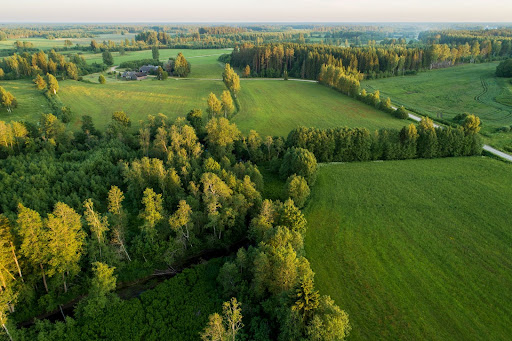
Mosaic rural land as a result of clearing with retained private native forest at a minimum 225 stems per hectare density.
- Pasture Expansion: Mosaic thinning and Uniform Thinning of Woody Native Vegetation.
The Land Management Code 2018 (Part 3) permits the clearing of native trees and shrubs after either notification to/ or certification from the Local Land Services for silviculture and the creation of land for pasture. Three sets (divisions) of requirements and conditions are set to determine the most appropriate for the land and the landholder. Each one varies in their level of impact, limitations, stem retention and suitability for the land type, location and size.
For example, Division 1 in the code clearly defines that the treatment area must be over a hectare and that trees retained must be uniformly dispersed whilst maintaining a 225 stems per hectare density.
Similar to Australian group selection, mosaic thinning regulations require a specific % canopy cover. Within the treatment area, canopy cover of uncleared trees must account for a minimum of 30%. As far as reasonably possible, native trees must be retained in patches of at least 5 hectares, evenly distributed throughout the treatment area, creating a mosaic/patchwork effect on the land of retained forest and pasture.
For more detail on pasture expansion land management regulations, see the Land Management (Native Vegetation) Code 2018, or for more information on the allowable activities relating to rural infrastructure, Local Land Services have a great guide which can be found here.
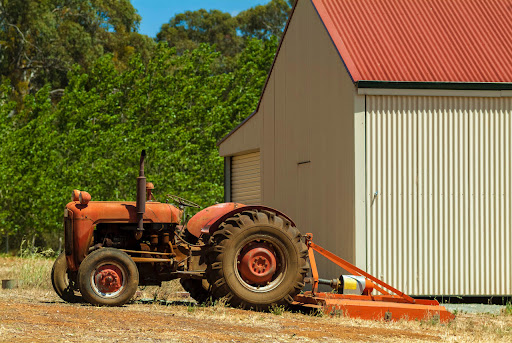
Clearing of trees and vegetation to protect property or support infrastructure are both covered under individual codes of conduct.
- Boundary Clearing to protect the property
Following the devastating bushfires of 2019/20, where over 2,470 homes were destroyed and 26 people lost their lives, the Rural Boundary Clearing Code 2021 was established to simplify and empower native vegetation management for rural landowners.
The code allows landowners within rural zones to clear certain vegetation along and within up to 25 metres of the boundary lines of their landholding to reduce the risk of bushfires.
The code also details the protection of Aboriginal areas of cultural significance, the protection of certain vegetation species, as well as the reduction of impacts on native wildlife and the prevention of soil erosion.
An online assessment tool is available on the NSW RFS website at www.rfs.nsw.gov.au. It allows landowners to conduct a self-assessment as to whether their land falls within the rural boundary clearing area for the Rural Boundary Clearing Code. The tool will also let you know the distance you are able to clear from your boundary.
For more information, see the Rural Boundary Clearing Code 2021.
- Clearing to protect and manage rural infrastructure
Clearing for permanent fencing, roads and tracks, water provision (dams, pipelines, etc), sheds, stockyards and windmills is permitted within the Coastal region of NSW up to 15 metres.
For properties in the Central and Western areas of NSW, the types of infrastructure eligible slightly differ, along with the permissible maximum clearing distances. Differences for the maximum distances on small holdings and vulnerable & sensitive regulated land also apply.
For more information, see Local Land Services Guide to allowable activities relating to rural infrastructure.
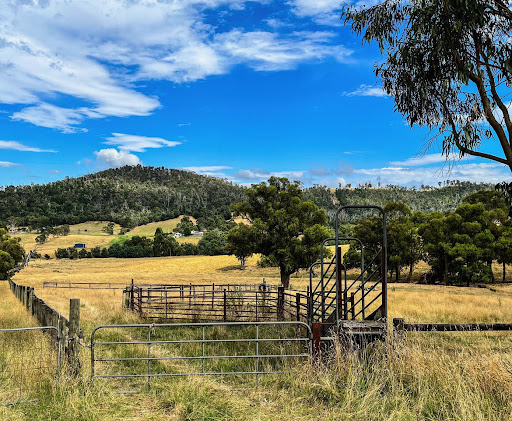
Landowners with a PNF plan are able to undertake clearing for three key reasons: prevention of imminent risk, in support of Aboriginal cultural activities and collection of firewood without approval.
Private Native Forestry Allowable Activities
For holders of a Private Native Forestry Plan, a range of routine land management activities associated with agriculture and forestry are classed as ‘Allowable Activities’. Clearing of vegetation for these ‘allowable activities’ does not require approval under the Local Land Services Act 2013. However, the vegetation cleared must not be a threatened species or habitat of a threatened species.
Allowable Activities include the removal of vegetation:
- For prevention of imminent risk – if a tree is deemed unsafe or poses a risk to personal safety or damage of property,
- Traditional Aboriginal cultural activities
- Collection of firewood – for use on your property, where no other prior harvested timber is available.
For more details on Allowable Activities for Private Native Forestry.
Need help in identifying the best approach for your private native forest?
We are here to help. With over 60 years of experience in private forest management, we know a thing or two about different approaches to managing private native forests. We can help you identify your property’s most suitable forestry management plan as part of our no-obligation free forest assessment and valuation. We’d love to hear from you.
Sustainable Forest Management operates along the East Coast, focusing on Northern NSW.
Want to read more? Check out these blogs you may find of interest:
Agroforestry benefits of sustainable forest management for NSW primary producers
